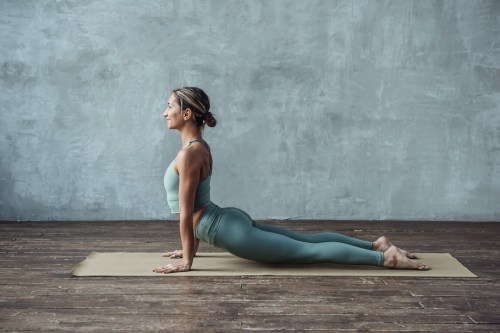Your home should always be your happy place, but that’s especially true right now. You may be spending more time there than normal, given calls for social distancing and self-quarantining in response to the coronavirus pandemic. And while few would argue that the space should be a warm, inviting, respite where you feel secure and comfortable to kick off your shoes and curl up on the couch, surprising obstacles may cause stress at home that may preclude you from achieving that coveted relaxation.
So, as an interior designer, allow me to introduce you to the most common reasons you may experience stress at home, and how to change that energy into something decidedly more calming.
Below find 6 common causes of stress at home, plus how to fix each
1. Your home features aren’t optimally functional
Whether it’s a drawer you have to shove in order to close or a window that’s too hard to open, when something in your home doesn’t work as well as you’d like it to, it can be more than just plain old annoying and wear down your positive energy. Tons of people have homes that weren’t designed well, or to their own liking, but workarounds exist that don’t require anything like a full-blown renovation. In fact, many of the maintenance issues we choose to ignore, have simple DIY fixes that don’t require a lot of money—just time.
Make a list of the worst design offenders in your home and start searching the internet for solutions. If you have a drawer glide that’s off track, for example, the fix may be as simple as taking out the drawer, cleaning up the tracks, and lubricating them to allow for a like-new slide.
2. Fluorescent bulbs are breaking you down in more ways than one
Research shows blue light (the waves in the blue spectrum that fluorescents produce) can impact your mood, your appetite, your energy levels, your skin, and circadian rhythm.
Layered lighting is one solution: Start to tone down overhead lighting in the evening and switch to lamp light. You could also wear blue-light blocking glasses to help minimize the extent to which the exposure may compromise your sleep. Also consider replacing your bulbs with lighting that mimics natural light, such as warm incandescent bulbs. If you want the benefits of LED lighting—longer lasting, lower energy, and lower maintenance—there are now many more options for LED light colors. Make sure to pick a warm tone that mimics sunlight.
3. You’re missing small pieces of furniture you didn’t realize you needed
Do you have a side table next to your chair to hold your glass of kombucha, or were you just going to leave it on the floor to get accidentally knocked over? Instead of going without that table (and inviting plenty of accidents), think about small pieces of furniture and accessories that can have multiple uses and don’t take much room.
Consider getting an ottoman that you can put your feet on—or a tray, to transform it into a tabletop for your drink. Or if you don’t have an island in your kitchen, create one by adding a rolling butcher block to give you additional counter space when you need it. If your seating is uncomfortable, add extra throw pillows with down alternative to make it softer.
4. Clutter is compromising your chill zones
You don’t have to reach Grey Gardens status for clutter to take a toll. Not only can clutter be stress-inducing, but it can also steal time by making you search for misplaced things. Some research even shows that the more you procrastinate cleaning up clutter, the bigger an effect it can have on your life.
Many people have cabinets and cupboards filled with items they never actually use. The things they actually do use end up on tabletops and counters. Switch that. Ditch the stuff you never touch, and use your cabinets as opposed to a tabletop for the items you do. You’ll have a much cleaner visual space—and easy access to your items. An easy and fast solution is to use beautiful containers or baskets to organize what you simply must leave out.
5. Your interior colors aren’t working for you
Color psychology research provides evidence the shades of your space can have a major impact on your mental state. Bright colors like red, yellow and orange feel hot and can bring on that type of energy. While that’s great for a workout space or anywhere else that you want to evoke a sense of intensity, it’s not ideal for relaxation.
Instead, opt for the cooler side of the color wheel, with soft blues, greens, and grays (as long as the gray isn’t too drab and boring). To encourage relaxation, go for tones found in nature, which is typically anything in the blue or green family—the color of sky, sea, and trees naturally have a calming effect on us. White is nice if you use a warm tone, but a super stark white can be agitating or severe.
6. Your environment is noisy, and your home decor isn’t helping
Whether construction is happening outside your window or you have roommates who stay up at all hours, the clanging and chattering can add stress at home. Your home decor might currently be part of that problem—but with a few tweaks, it could be part of the solution. Do you have a lot of long hallways without rugs in them? Empty wall spaces? Modern furniture that’s all glass or cement? Anything that won’t absorb sound will amplify it, so think about the ways you can add more softness. Place rugs over hardwood floors or tile, and add window treatments or drapery—any opportunity to put more fabric in a space will absorb sound as opposed to projecting sounds.
Since you might be home a lot more than you’re used to, here’s how to stay motivated to work. And here are some of the filthiest things you might forget to clean.
Sign Up for Our Daily Newsletter
Get all the latest in wellness, trends, food, fitness, beauty, and more delivered right to your inbox.
Got it, you've been added to our email list.









